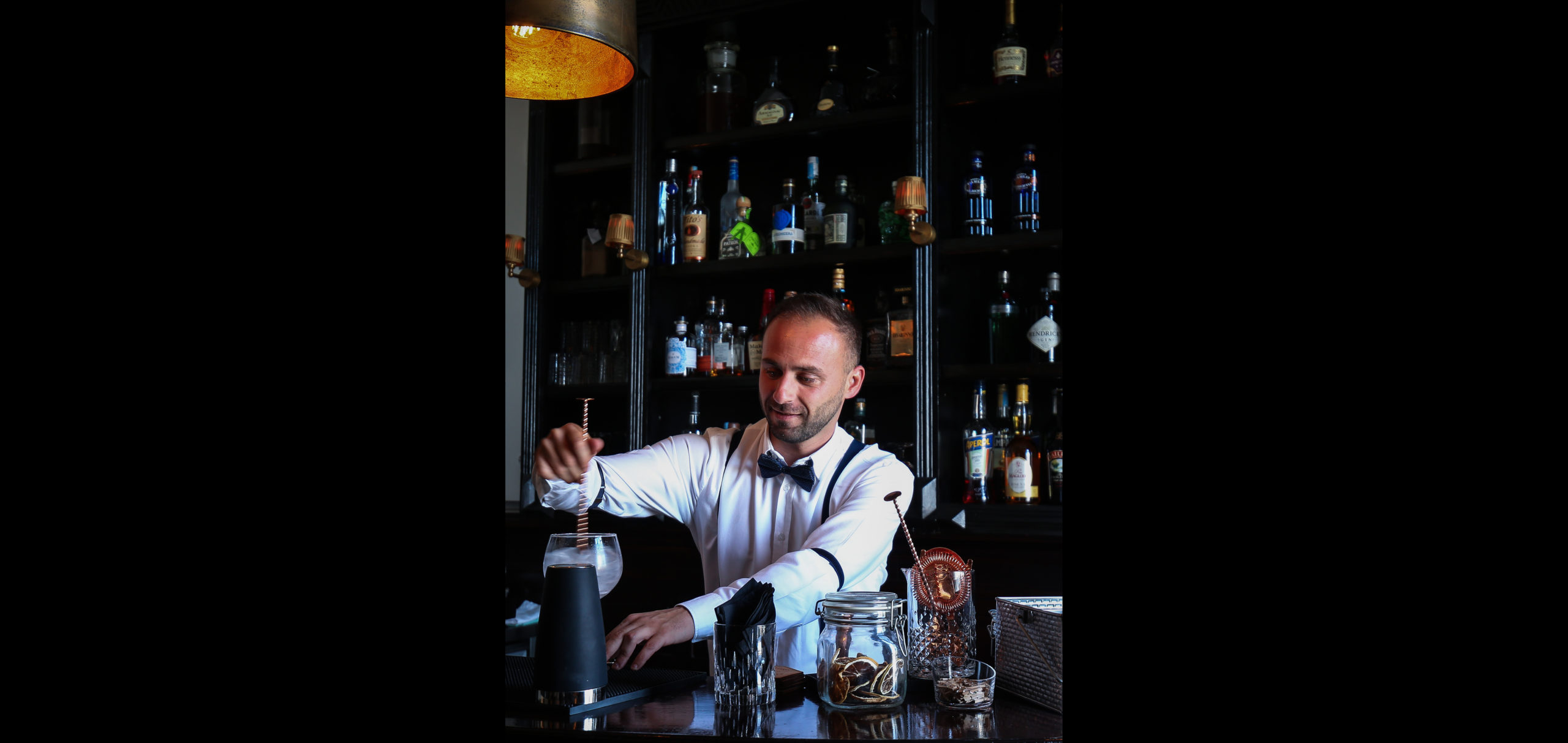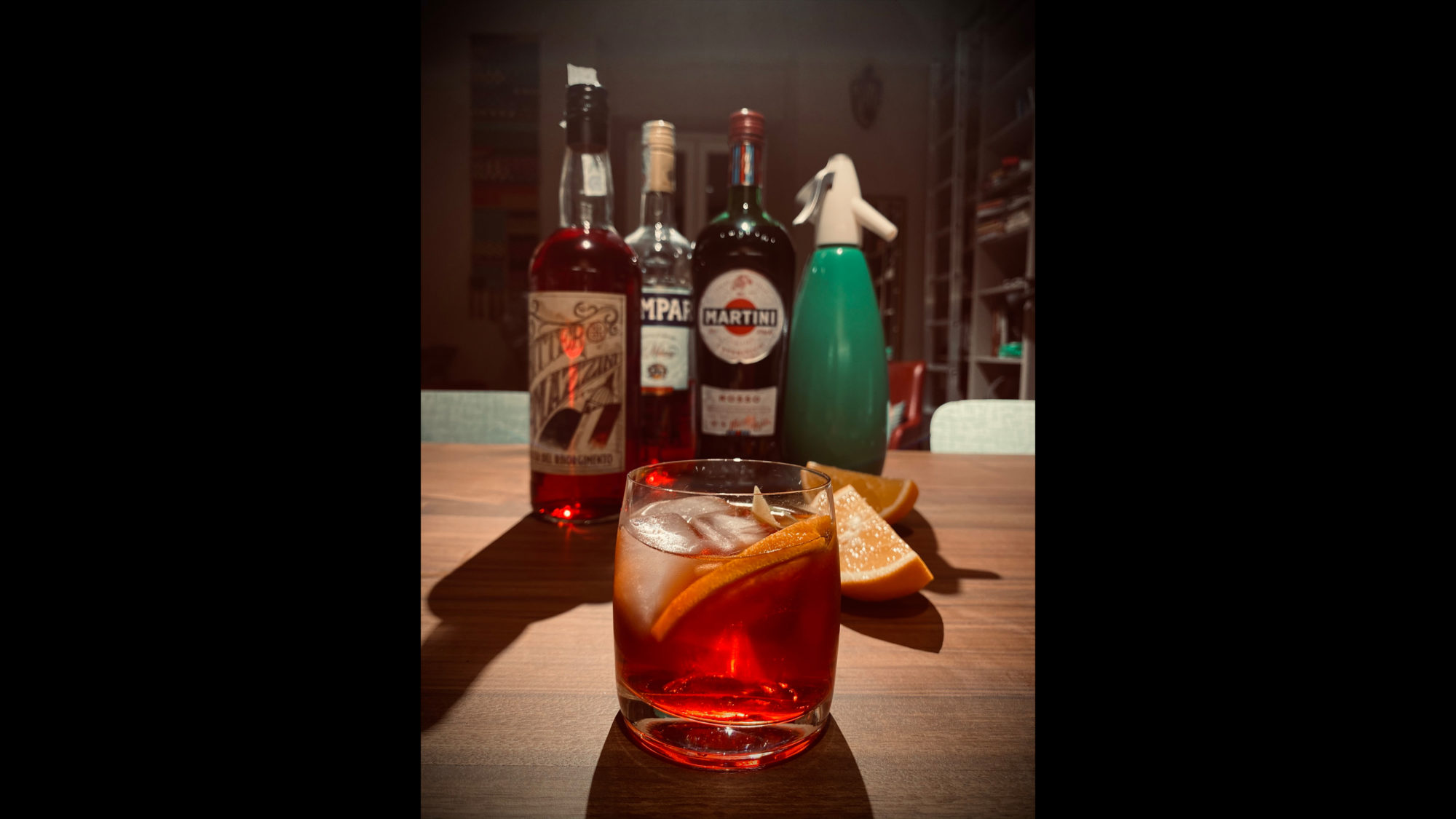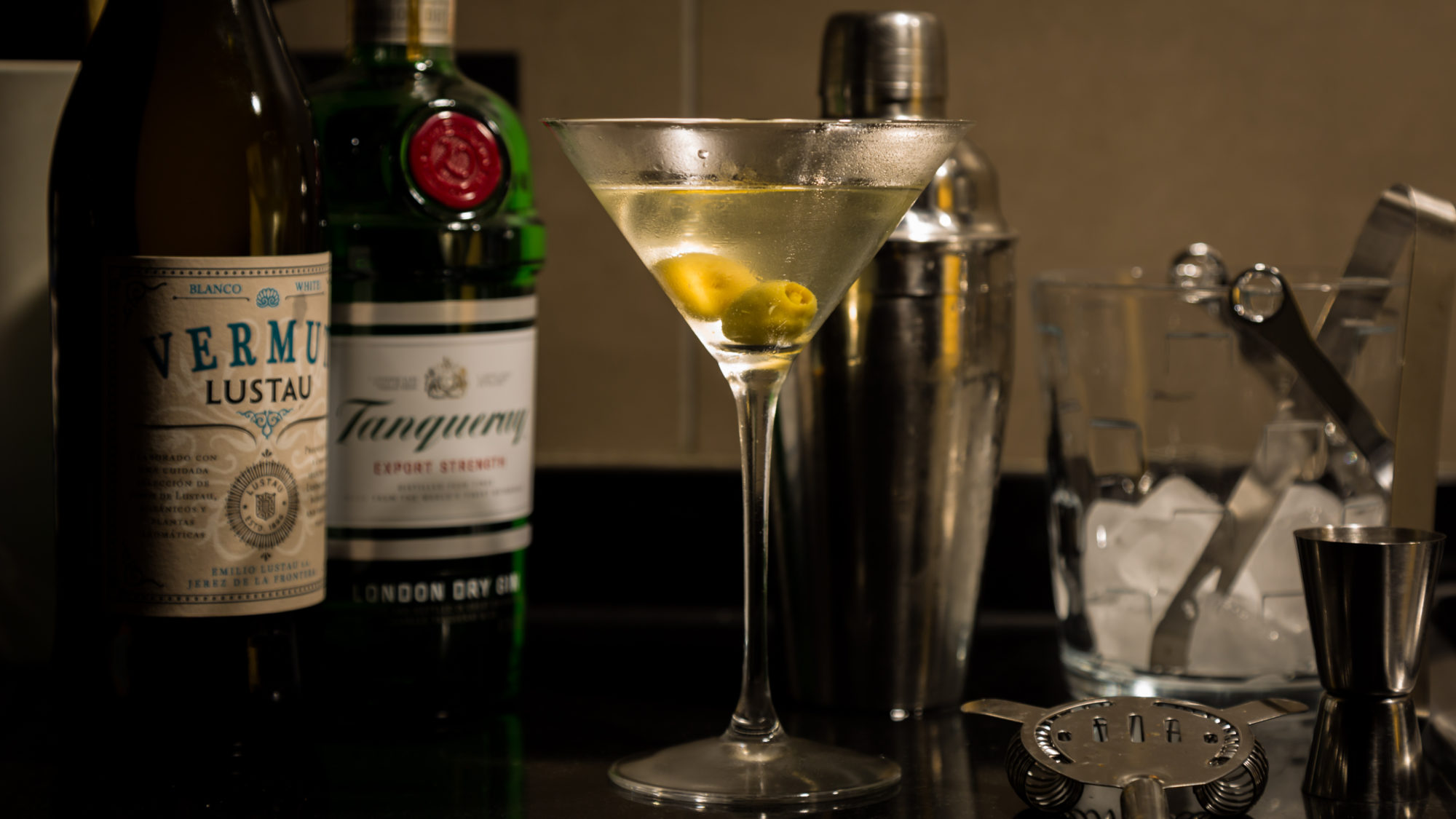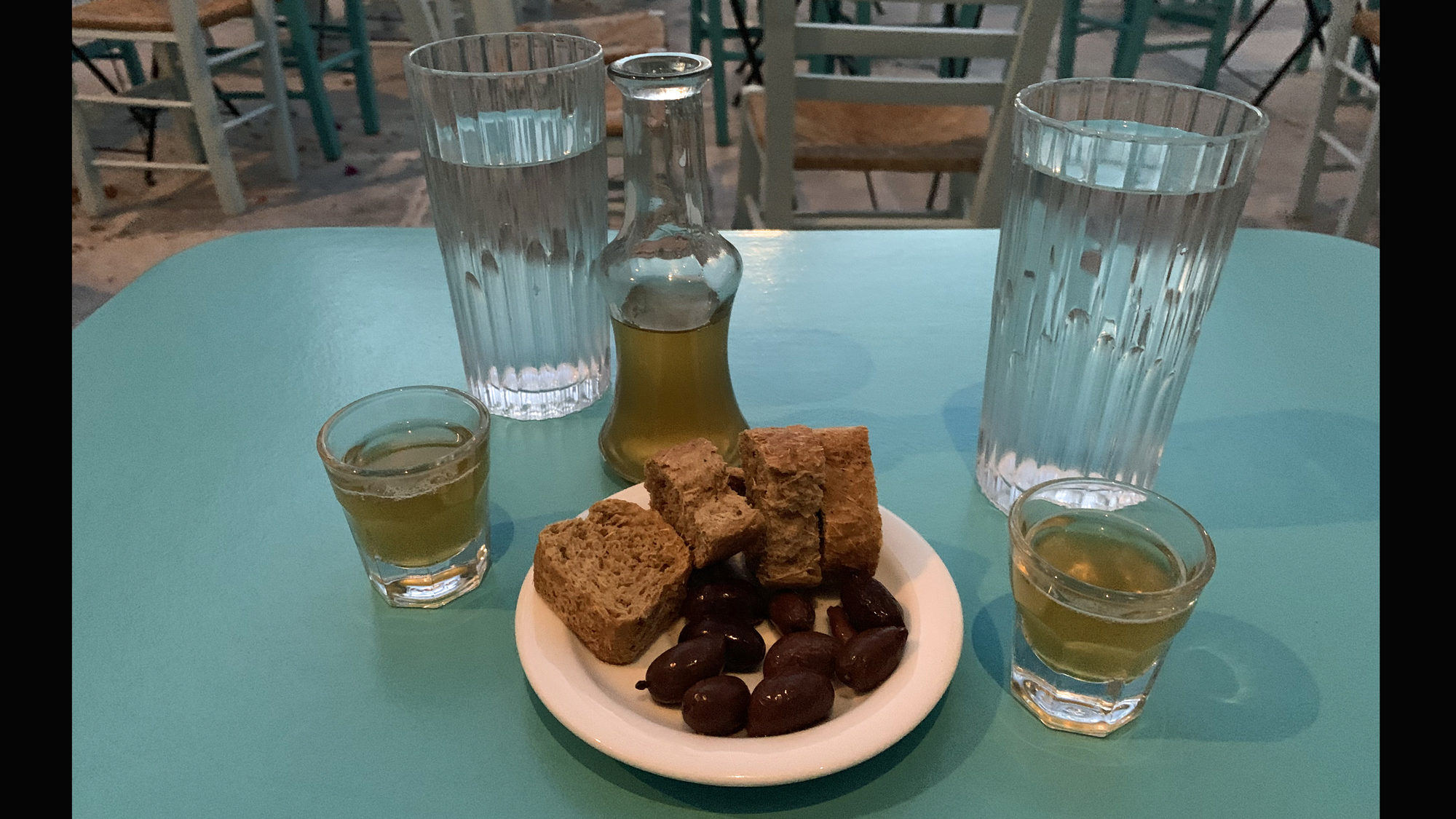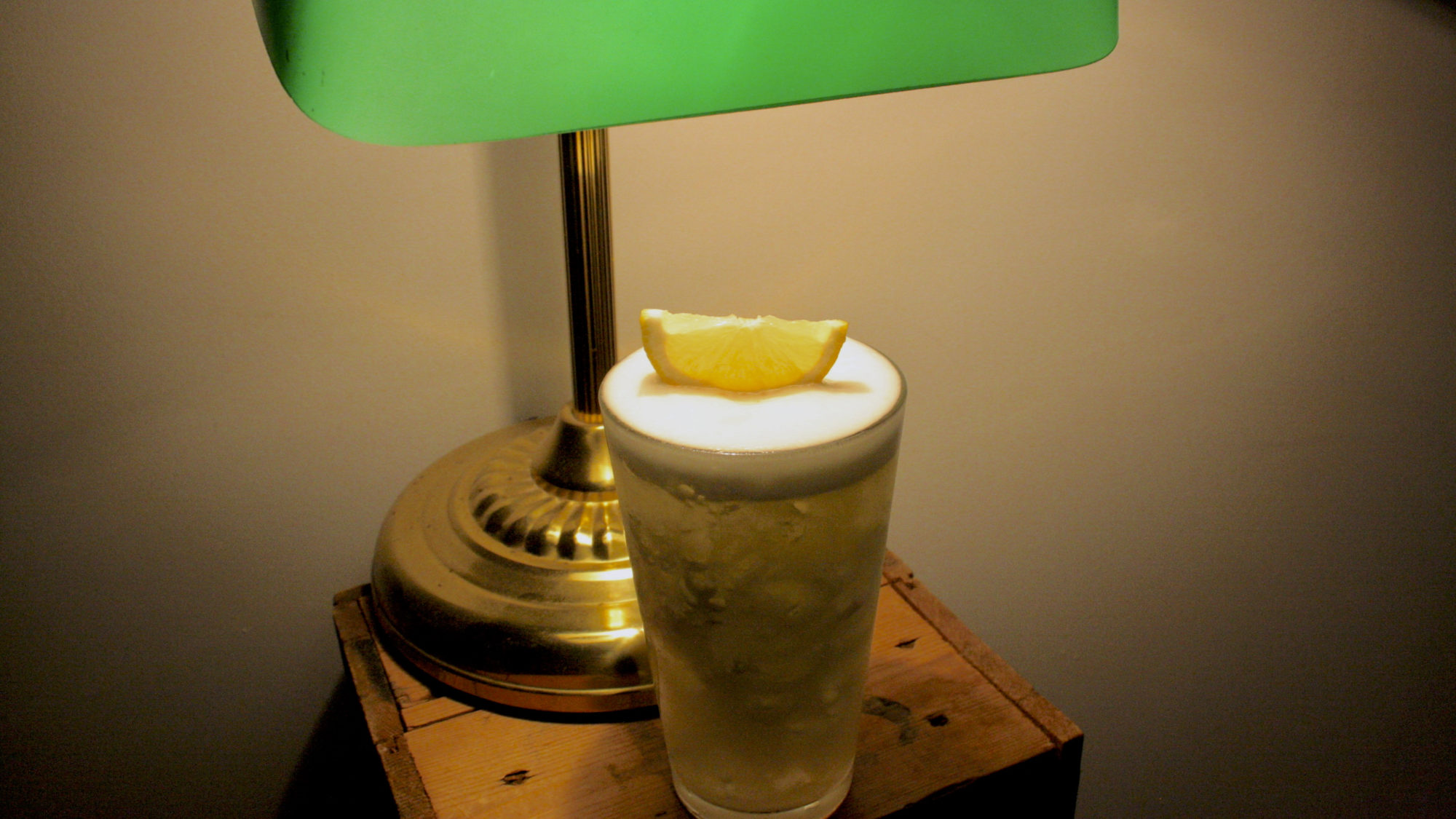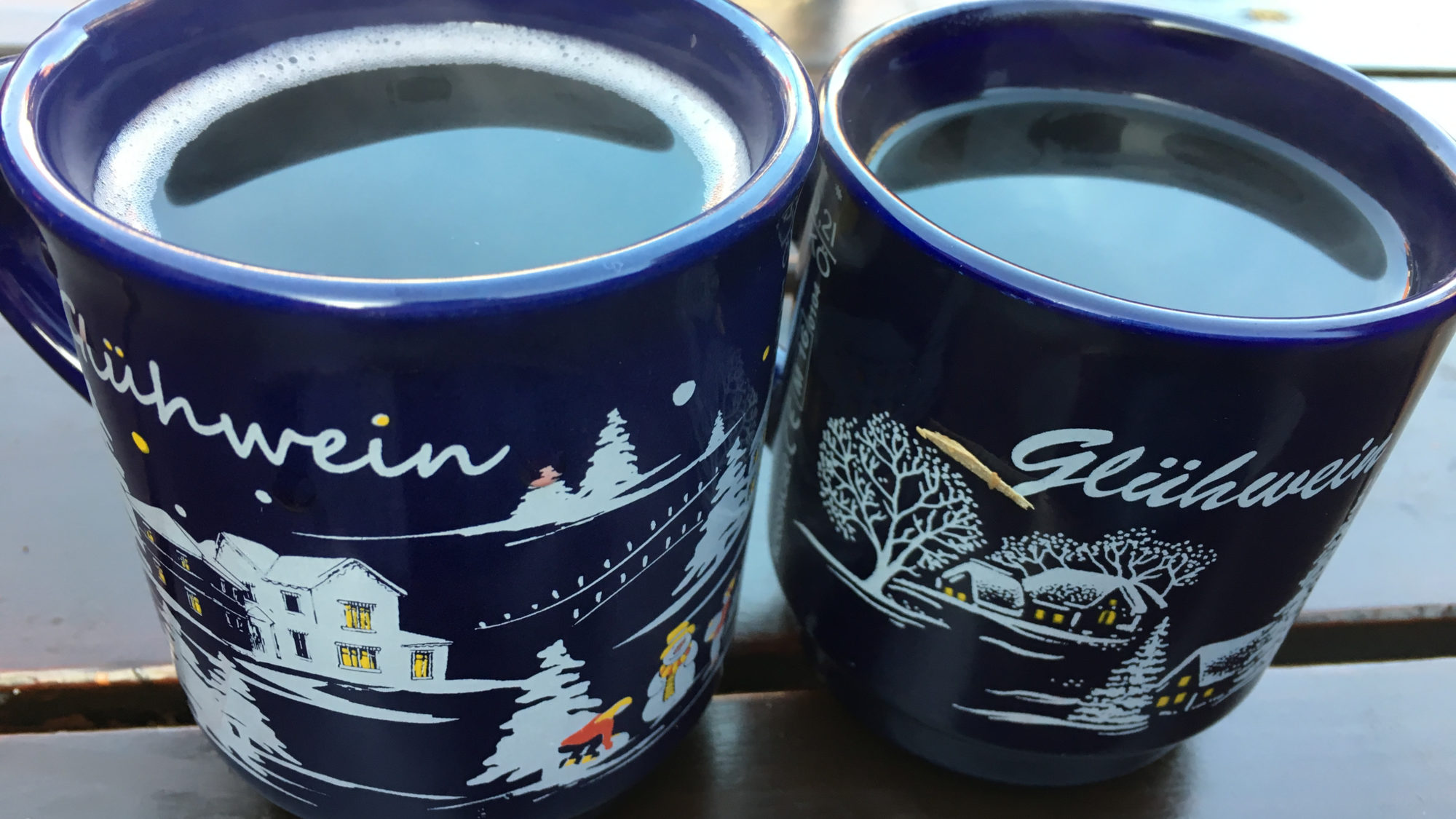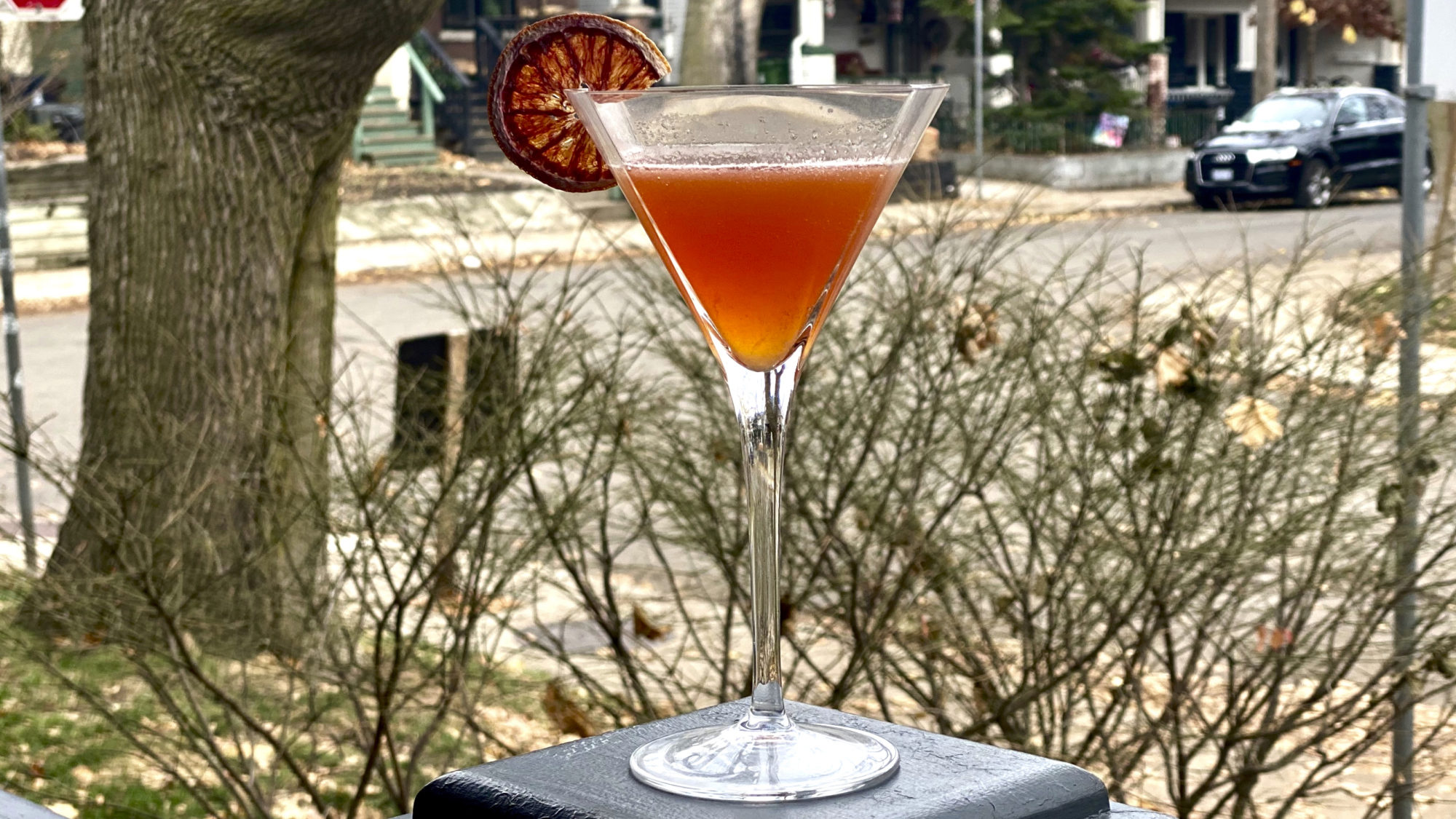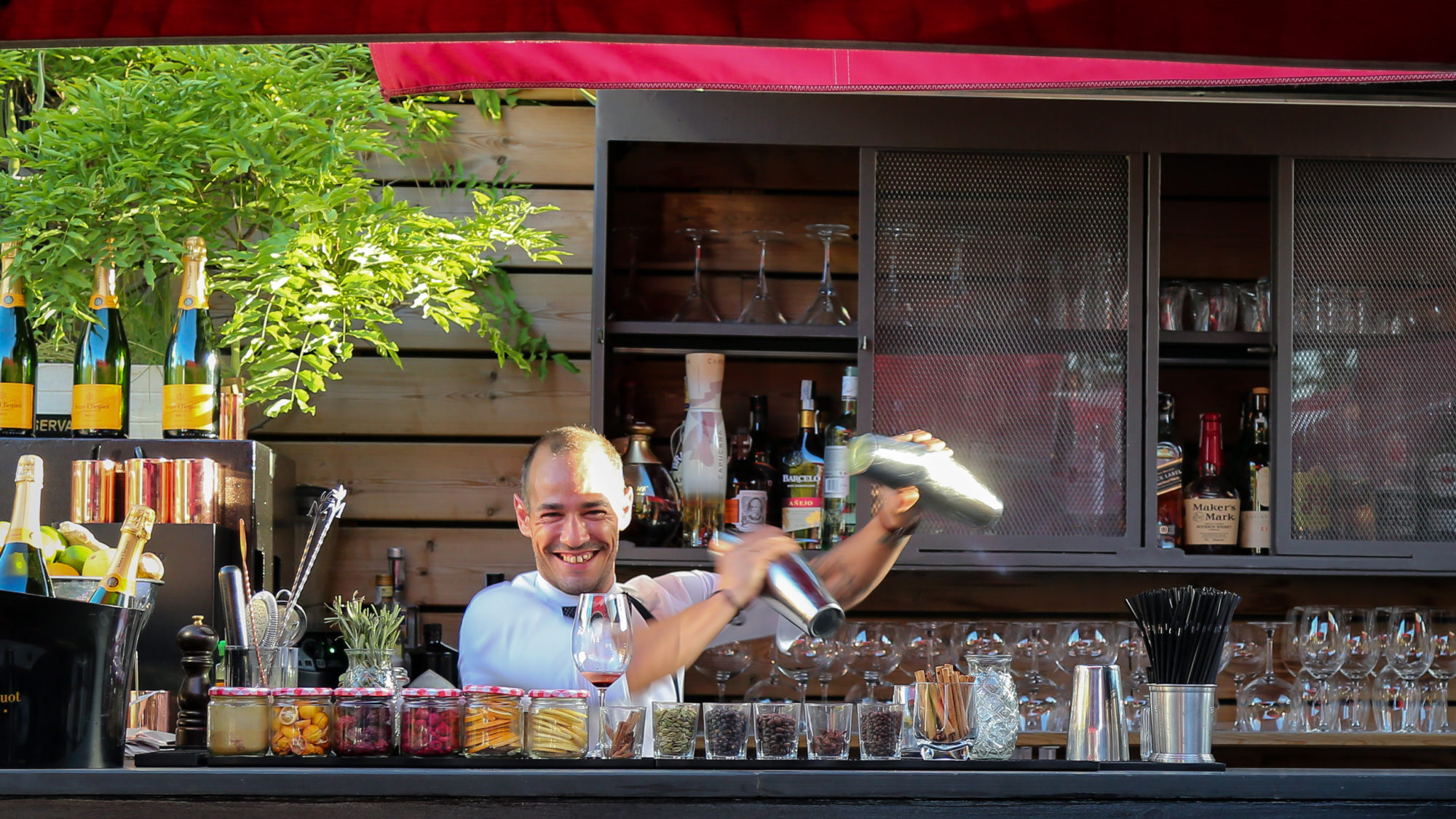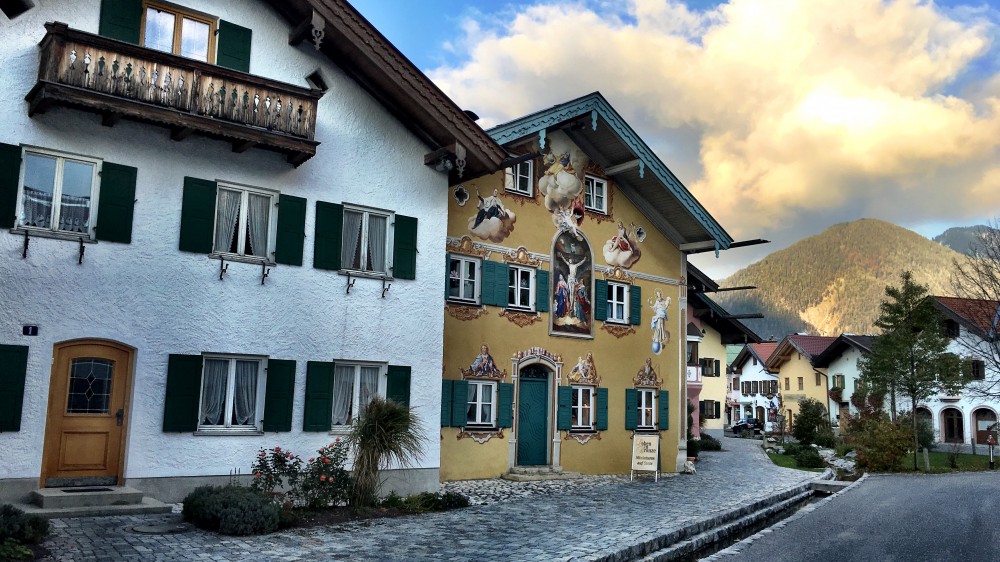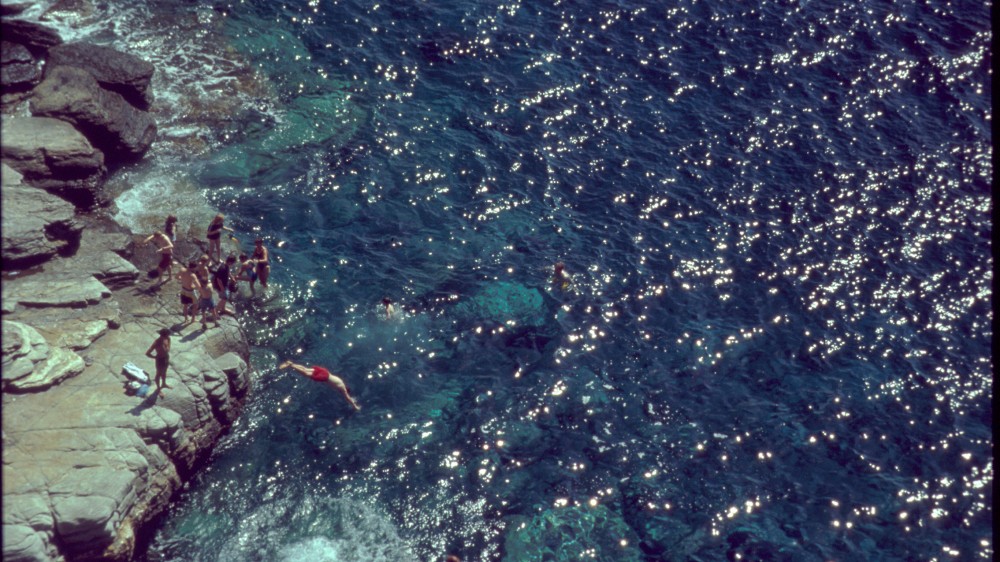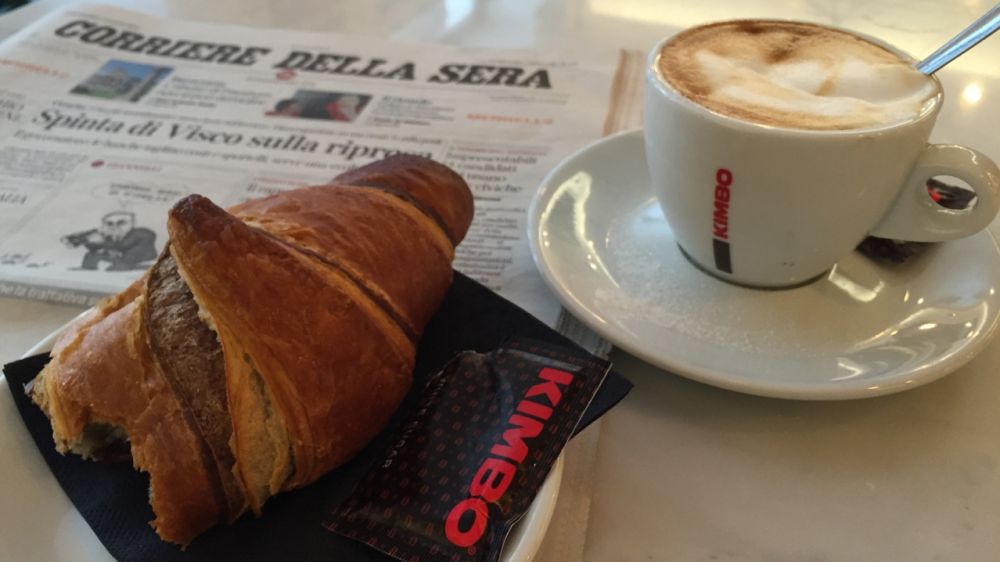Swinos in Lockdown: Cocktail Recipes from the Pigs
Holidays are lurking and with it, more Coronavirus cases and renewed lockdowns. It’s all been enough for anyone to reach for the bottle. As we hunker down for the winter, we asked around our planning team to see who’s got the bartending chops in the Trufflepig farm. Below are some road-tested recipes that came back to us from our planners here at home and abroad:
Tu vuò fa l’americano – from Luisa in Italy:
The years after WWII in Italy are a time of radical transformation and intense reconstruction, before the economic boom of the 1960s. In the 1950s, although the large part of the country was still quite rural, the roaring appeal of the American way of life was starting to sweep through mass culture, luring more and more youngsters in. Alberto Sordi’s performance in Un Americano a Roma, from 1954 and Renato Carosone’s swingy and satirical hit Tu vuò fa l’ americano, written in 1956 and sung in Neapolitan, perfectly encapsulates the flavour of Italian society at the time.
But the song’s catchy chorus (Tu vuò fa l’ americano…Ma si nato in Italy — You want to act American, but you were born in Italy) also seems to fittingly describe one of Italy’s most widely known cocktails, the Americano: in spite of what the name might suggest, this drink is Italianissimo, as per its ingredients — Bitter Campari and soda from Milan and sweet red vermouth from Turin.
Its origins are somewhat uncertain: some believe it’s a variation of an Italian concoction of Campari and red vermouth, still popular today, called Milano-Torino, that Gaspare Campari used to serve at its bar in Milan in the 1860s; others believe it’s an homage to Primo Carnera, an Italian boxer who reigned the US World Heavyweight Champion in 1933 and 1934, and who was nicknamed “L’Americano” because of his success.
Be it as it may, this bright-red old-school classic is simple to prepare and perfect for an aperitif. It has a bitter yet smooth profile, which James Bond also appreciated: it’s the very first drink he orders in the Ian Fleming series. Take that Martini.
Here’s the International Bartenders Association’s recipe (with my notes in brackets):
INGREDIENTS
30 ml Bitter Campari (or an artisanal bitter if you prefer — I used one from Sardinia this time)
30 ml Sweet Red Vermouth (Carpano Antica if you want to treat yourself)
A splash of Soda Water
METHOD
Mix the ingredients directly in an old fashioned glass filled with ice cubes. Add a splash of Soda Water. Stir gently.
Garnish with half orange slice and a lemon zest (I used fresh bergamot zest).
A Riff on the Classic Martini- from Sebastian in Spain:
I prefer to mix this with one of my favourite dry gins from Menorca, Xoriguer, but as I’m somewhat stuck in Morocco at the moment I make do with Tanqueray. I make it a bit more ibérico by using dry white sherry vermouth (such as for example, Lustau, with requisite wormwood and other botanicals, but made from the region’s palomino fino and muscatel grapes). Stirred (not shaken) in ice, and poured into a martini glass over three aceitunas con anchoas, anchovy stuffed olives. Make it “dirty” by adding a splash of the olive juice and, voilà, James Bond meets Andalusia in a glass (resht in peesh, Sean).
INGREDIENTS
3 parts dry Gin to 1 part white vermouth.
Sure-fire fire-water from Jacoline in Greece:
I first had this drink on a chilly Good Friday night, sitting out on a village terrace, watching the candlelit epitáphios procession led by a solemnly chanting priest pass. A hot drink made of raki (a lethal brandy) and meli, Greek for honey. Rakomelo. Oh man! Sweet, bitter and spicy, take me to heaven already. And bring me another little carafe while you are at it. Greeks may have their Rakomelo mostly in winter; I will have it any time of the year. Though it may never taste as good as it does at that little café where I first had it (for the record: that was in the Chora of Serifos, at Stratos’), it’s not too hard to reproduce at home.
METHOD
To make enough to be shared, pour a cup of raki in a small saucepan, add a two or three tablespoons of Greek thyme honey, one or two cinnamon sticks, a couple of cloves and a bit of orange peel. Stir, bring to a boil, stir some more and let it simmer for five minutes. Serve hot, in shot glasses.
Le Gin Fizz – from Alex in France:
In a blatant act of treason against my French roots, I vow an unfounded yet unconditional admiration to my British neighbours from whom I stole two items, a self-proclaimed English accent, and a passion for Gin. However, Tonic water doesn’t sit well with me, so I looked at the rich culture of New Orleans for inspiration, and channeled the Henry C. Ramos in me to bring you his stunning creation, the Gin Fizz.
INGREDIENTS
2 parts gin /Monkey 47 (🇩🇪 ), KI NO BI (🇯🇵 ) & Sab’s Spirit (🇫🇷 ) are my personal favourites
1 part lemon juice, freshly squeezed (don’t cheat)
¾ part cane sugar syrup
1 egg white
1 part club soda, to top
METHOD
Add the first four ingredients to a shaker, stir for 10 seconds, then add 2-4 ice cubes and give it a firm and vigorous shake for a solid 30 seconds to chill and bring the egg white to a foam like state. Preferably use a Boston shaker and pour your mix with a Hawthorne strainer, gives the intended texture outcome. Now, I like my Gin Fizz ‘Pisco sour style’ but a strict following of the IBA recipe asks to top up your drink with a dash of club soda for extra fizziness. To achieve that perfect foam on top of your glass, pour 1 part of club soda while (not after) you do your mix into a Collins glass full with ground ice. Add a half-slice of lemon on top for drama and toss it away the second after the picture’s taken to drink your beverage
Glühwein (mulled wine) from Claudia’s ancient family recipe from Germany:
Nothing rings in the festive season quite like a steaming hot mug of spiced mulled wine. True to my Germanic roots, I prefer the homemade stuff to anything off a store shelf, and it’s surprisingly easy to make. You start off with a bottle of relatively cheap red wine, but nothing too tannic. Pick a decent one for sure, but remember you will “ruin” the wine by adding a generous amount of sugar so the sweeter the original the better. You will also need a 1/2 cup of sugar or honey, a few cinnamon sticks, six whole cloves, three star anise and an orange sliced into rounds.
METHOD
Combine the bottle of red with the rest of the ingredients and bring to a simmer (not a boil, you don’t want the alcohol to evaporate, which happens at 70º!). Cover and simmer gently for at least half an hour. Prior to consumption, try your mulled wine and add more sugar or honey to taste. Pour through a sieve and serve hot in a ceramic or glass mug, garnish with a cinnamon stick if you’re feeling fancy.
From Trufflepig co-founder Greg:
Since I can’t get on a real plane these days to shake things up and refresh my outlook on the world, I’ve been relying on another type of plane to get the job done – a Paper Plane. This bourbon-based cocktail wins me over time and time again – like a boozy déja-vu. Marcel Proust once said “The real voyage of discovery consists, not in seeking new landscapes, but in having new eyes.” Good old Marcel – I am guessing he was three paper planes deep when he came up with that jewel. In these COVID times I reckon we should all follow his lead. Grab your shaker, friends, and let the real voyage of discovery begin.
INGREDIENTS
3/4 ounce bourbon
3/4 ounce Aperol
3/4 ounce Amaro Nonino Quintessentia
> 3/4 ounce lemon juice, freshly squeezed
Add all ingredients into a shaker with ice and shake.
Strain into a coupe glass.
Settle on the porch.
Our back-up plan to open a post-pandemic pub will hopefully remain a pipe-dream as the world readies for a Covid-19 recovery. Let us know your thoughts or reach out to nit pick about our cocktail recipes.
